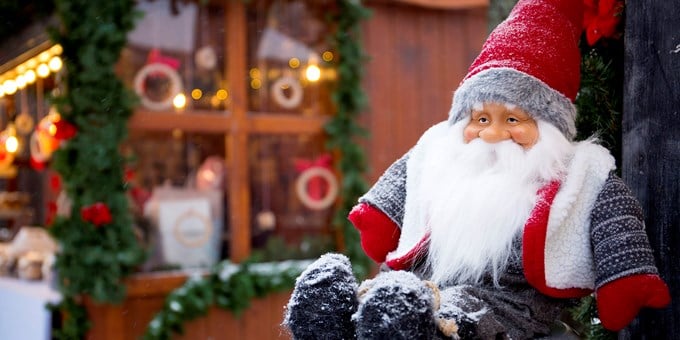🎄 Christmas Elves ⛄
We all know of Santa and his workshop of elves, but we're did this story come from what are the origins of the jolly fat man's helpers?
The modern elf folklore come from Norse/Scandinavian mythology, the Nisse or house gnome and the álfar, also called huldufólk or hildafolk 'hidden folk'.
Sweden's gift giver before Santa was the Tomten and the Yule Goat though by 1891, the Good old St Nick had merged with Tomten, who was originally an elf or gnome like farm guardian (like the Nisse). following the work of Jenny Nyström, this new combination of old and new Christmas figures became the Jultomten.
In Nordic countries, Nisse are the closest thing you could consider as Christmas Elves even though nisse are not actually elves and they will usually only wear red instead of the green and red outfits that elves are known for in most western countries.
Several Norse legend were likely combined with other Scandinavian and Celtic legends and myths about these small magic beings.
All kinds of stories about elves, fairies nature spirits and even gnomes can be found from multiple regions through Europe there are also similar supernatural beings that could be connected to elves, such as kobolds or duende from Germany Mexico and South America or the Scottish house spirits called brownies. In Medieval Europe, elves were seen as tricksters and were often linked to demons especially after the christianization of Europe most things of a supernatural or otherworldly nature where considered evil.
The modern Christmas elf + working in Santa's workshop) appeared in literature as early as 1850 when Louisa May Alcott (Little Women ) completed, but never published a book called Christmas Elves.
Though a earlier reference to Christmas elf's can be found In the 1823 poem A Visit from St. Nicholas ( 'Twas the Night Before Christmas), by Clement Clarke Moore, Santa Claus himself is described in line 45: "He was chubby and plump, a right jolly old elf".
The image of the elves in the workshop was also popularized by Godey's Lady's Book, with a front cover illustration for its 1873 Christmas issue showing Santa surrounded by toys and elves with the caption "Here we have an idea of the preparations that are made to supply the young folks with toys at Christmas time".
During this time, Godey's was a very influential figure to the birth of some of our Christmas traditions, having shown the first widely circulated picture of a modern Christmas tree on the front cover of its 1850 Christmas issue. Additional recognition was also given in Austin Thompson's 1876 work "The House of Santa Claus, a Christmas Fairy Show (Christmas play) for Sunday Schools"
A few other versions of elf's or helpers are
Ded Moroz (father Frost / Grandfather Frost ) and his grand daughter Snegurochka (Frost Maiden) from Russia ⛄🎁
Knecht Ruprecht from Germany.🍻🎅
The Hoesecker in Luxembourg.🦌
Zwarte Piet (Black Peter) In the Netherlands and Belgium who accompany Saint Nicholas on his global gift giving.🎄
And lastly the modern Christmas tradition involving that ever watchful snitch The Elf on the Shelf .🧝♂️👀
Hopefully none of you are on the naughty list, this year 🙂
Have a great Christmas and happy New Year.
🎄🎁🎅⛄🦌🎄
🦇M🦇
Last Post for the year, thanks for stopping by and have an awesome 2025🎆🎇

















